The Puna Eruption
The last thing most people would put on their Xmas list is “Dear Santa, please could I have an active volcano in my back yard”. For sure there’d be advantages: A built in BBQ that could handle pretty much any size of steak, and I wouldn’t have to pick up after my dog’s back-end eruptions (the last big clean up, which thankfully my wife did, clocked in at 29 “deposits”). Aside from that and the free orange light show, it’s hard to see any real benefits to rivers of lava squashing the Hydrangeas.
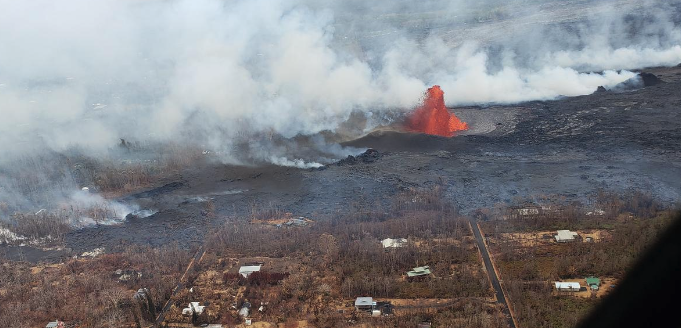
So, spare a thought for Melissa who lives in the Leilani Estates on the Big Island of Hawaii. In May 2018 she had to deal with “Fissure 8” -part of the catastrophic Puna eruption- spouting molten basalt a few hundred yards from her back door for the best part of 5 months. In total, twenty-eight fissures opened up and the residents were unable to go home for half a year while the volcano splodged merrily away. Granted, Melissa was luckier than the unfortunate residents who lost their houses, and she now gives private tours around the Fissure 8 cinder cone, but it must’ve been an awful experience waiting to see if her home would survive the fires. The eruption destroyed over 700 structures, burying 35 square kilometres of what was then inhabited land under a mix of black a’a and pahoehoe flows. It’s now regarded as the most destructive eruption in the US since Mount St. Helens in 1980.
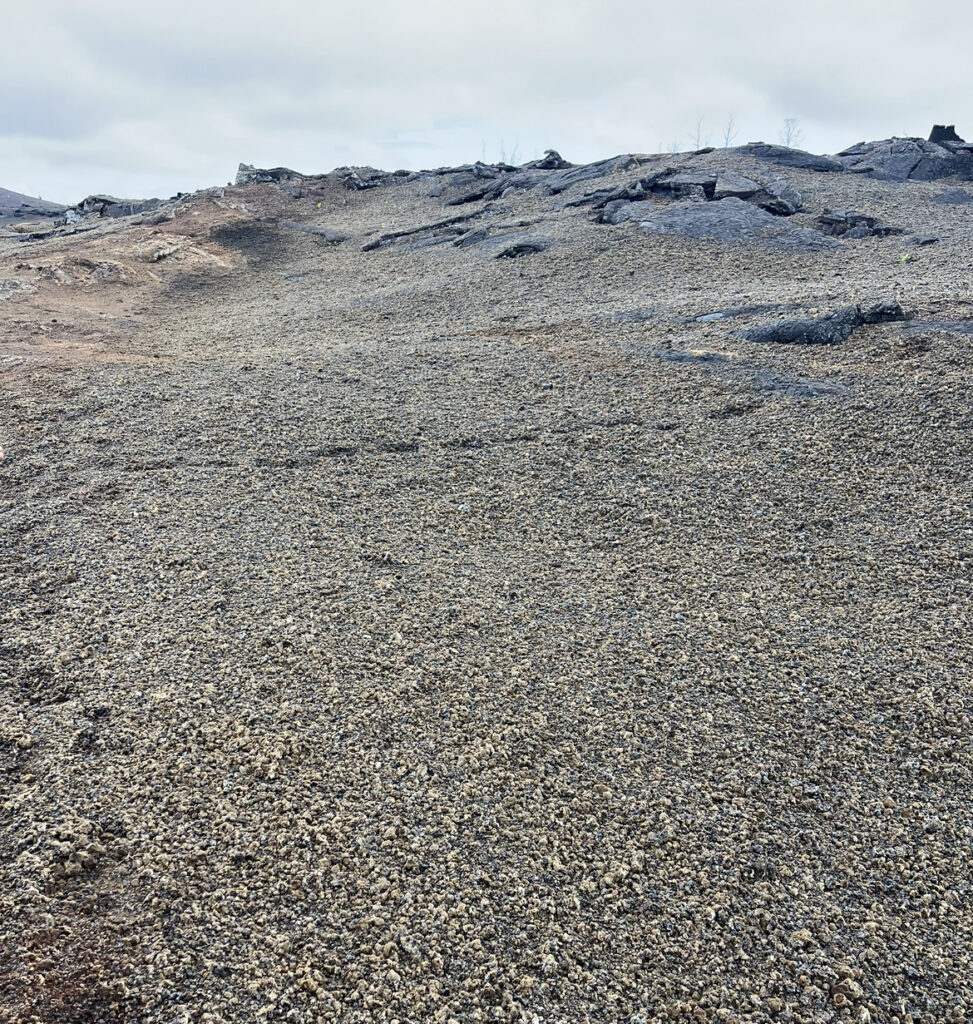
Hint: Stop Building There
As well as incinerating a large part of Leilani, lava filled in scenic Kapoho Bay taking a major holiday resort and marina (Vacationland Hawaii) with it. Funny enough, this was the second time Kapoho has been buried. It was destroyed by an earlier eruption in 1960 despite efforts to divert the lava flows with berms and massive water sprays (there’s perhaps a lesson to be learned here.) Here’s a fascinating animation (link below) that shows how the 2018 magmatic event developed. If you look closely, you can see Fissure 8 toward the bottom left of the flow map, just below the words Leilani Estates. It was one of the main vents feeding the huge flows that eventually claimed Kapoho.
From Plankton to Lava
I was in Hawaii with my wife for 10 days in early December. We’d cashed in a WestJet credit from a COVID-cancelled family trip which had to be spent on another flight. On our second day, shortly after I’d managed to destroy my nice laptop with a proper soaking of bottled water, we went snorkelling in the warm Pacific waters off the Outrigger resort near Kona. It was fish-spotting by floodlight – a boat towing a surfboard with lights attached to it to attract sea life. The ocean was awash with plankton drawn to the lights; small white specks that jetted and spiralled happily around in the blue water and we were visited by half a dozen giant, hungry manta rays hell bent on eating the happy plankton. But I digress.
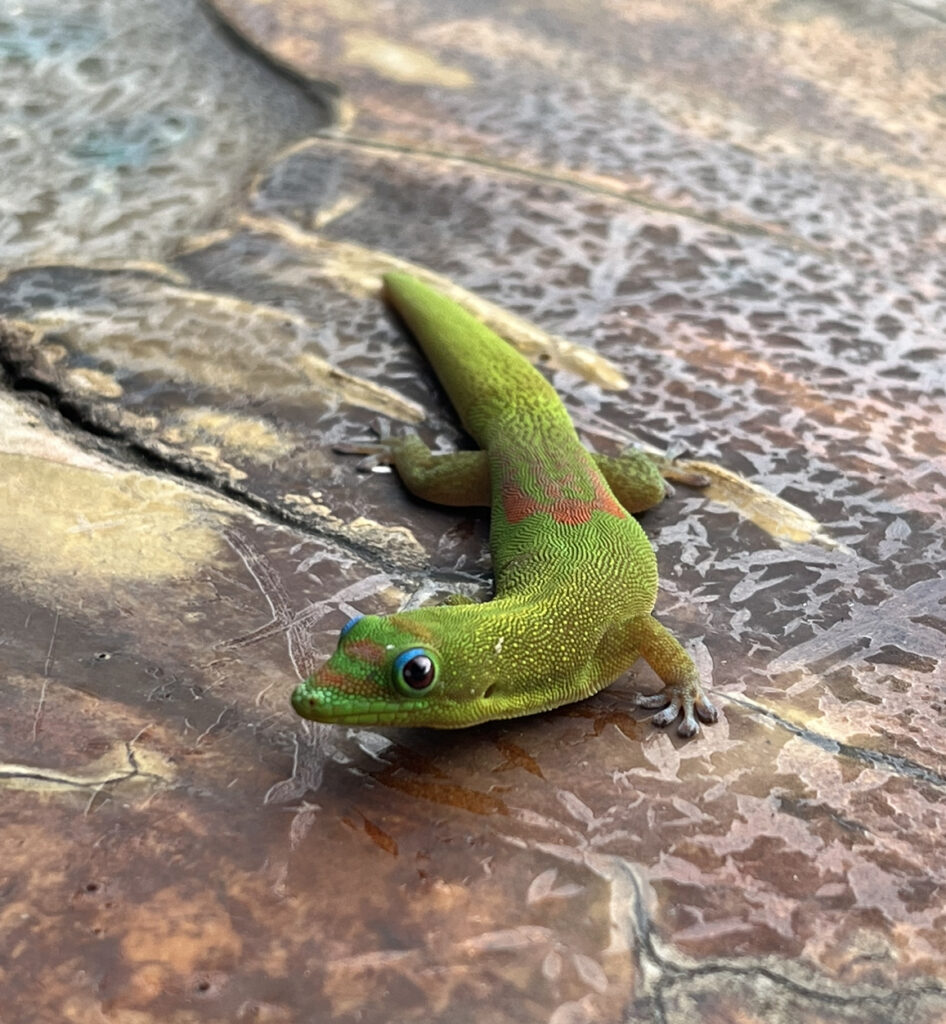
On the 20-minute boat ride back to shore, two of our fellow passengers – a burly chap from Indiana and his not-so-burly wife- mentioned the Fissure 8 volcano tour and said it was a highlight of their trip. It was privately arranged on-line and there was no fixed price for the outing: it was by donation to Melissa who runs tours from her house in Leilani. Hate it, and you don’t pay. A short week later we were staying on a farm near Hilo just north of Puna on the eastern side of the Big Island. After an email exchange with Melissa, we drove the 40 minutes south to Leilani and knocked on her door, not sure what to expect.
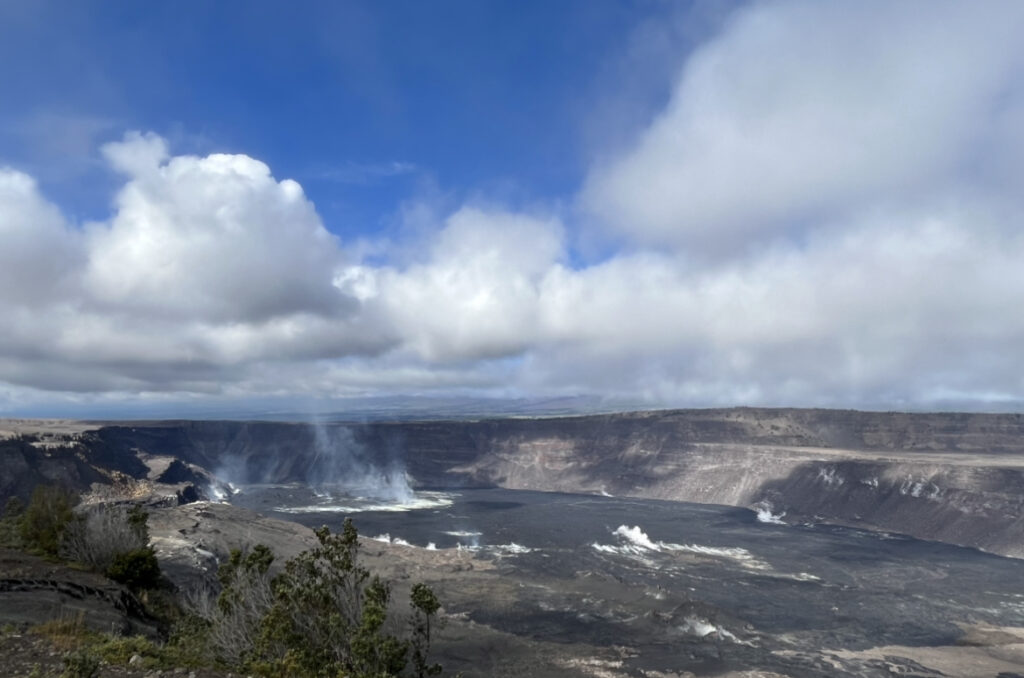
Melissa’s Garden
She’s a nice woman, very chatty who put us at ease quite quickly. She sat us down on a couch in front of a huge TV set up in her car port. By way of introduction, she shows her guests 2 films that cover the history of the 2018 eruption compiled from contemporary news reports. One is linked here. Ten minutes of conversation with Melissa was enough to tell me she’d done her magmatic geology homework (at least as it pertains to Hawaii) and she had a decent amateur knowledge of the flow types, rock textures and the large-scale plumbing systems that move so much lava around, so we were off to a good start.
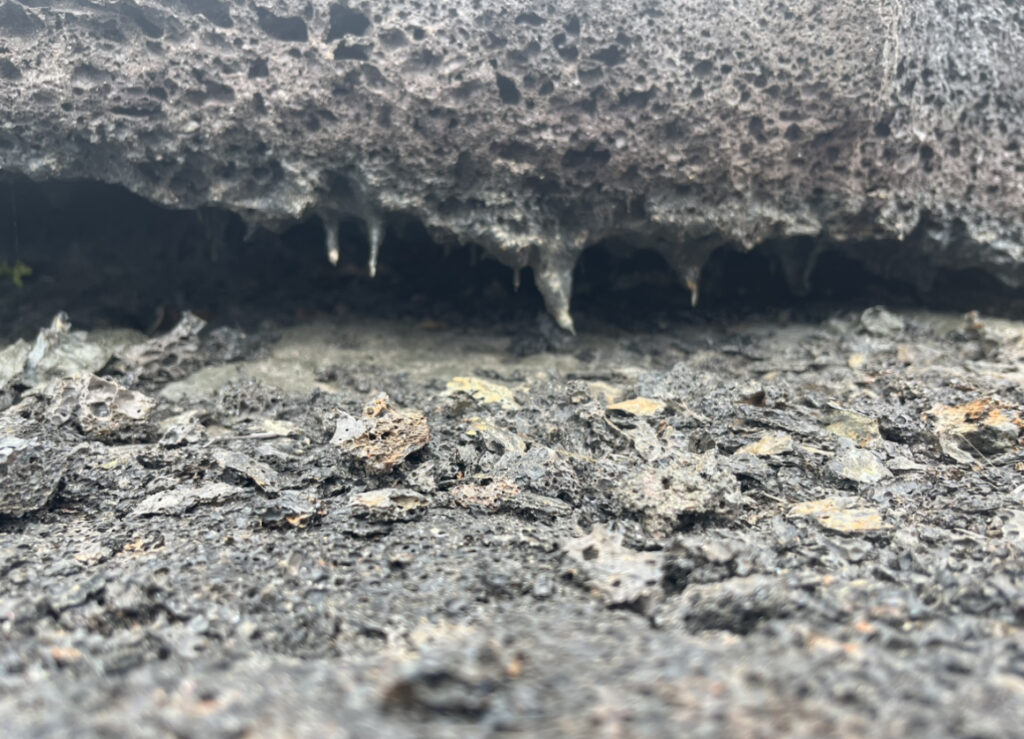
After the videos, we set off down to the bottom of her garden along a windy, lush green path. We pushed through some bushes and emerged into the open via a small gate in her fence. Which is when my jaw hit the floor. We were on the edge of a huge jet-black field of pahoehoe lava, a scene straight out of a disaster movie. It was completely devoid of vegetation. In the middle distance was a fresh-looking cinder cone with active steam vents puffing away between us and the cone. Off to our right, a few meters away, was a jagged, colourful gash in the lava; a rough natural fissure full of white, black and rusty red rocks with colourful crusts of fresh yellow sulphur in places.
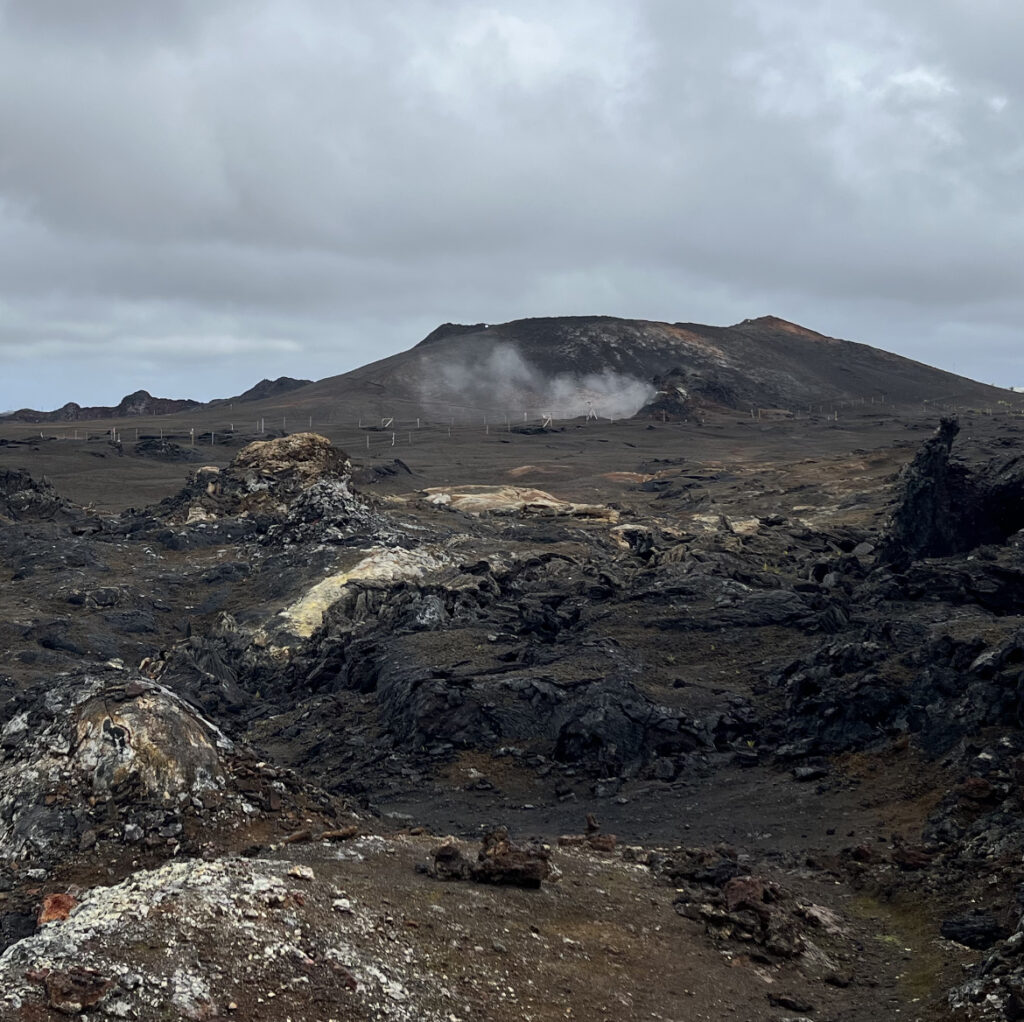
The Candy Store
She led us along a well-beaten path pointing out things like the knee-deep tephra deposits (I never knew it was so light) and delicate strands of Pele’s hair – thin, almost invisible filaments of splashed basaltic glass that get caught in cracks and under large rocks. We’d studied Pele’s Hair in igneous geology at college, but I’d never seen it in the flesh, and I was excited in a squinty-eyed kind of way to finally hold some. But be warned, breath on it and it’s gone; it really is as light as hair.
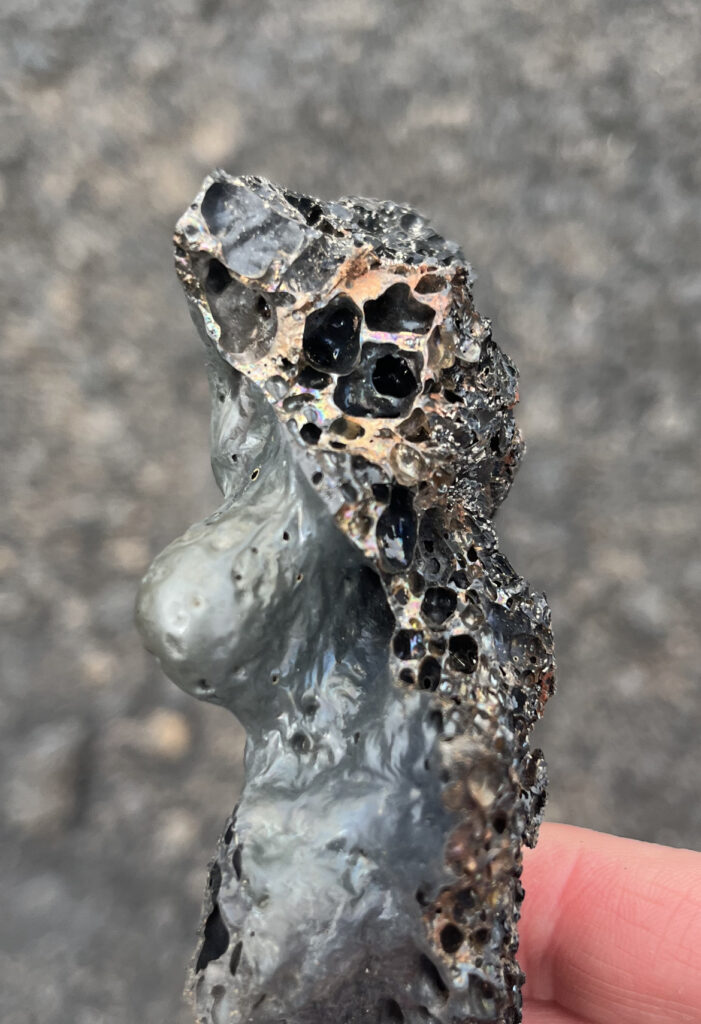
I spent a very happy hour clambering over the barren landscape while my wife patiently indulged my childish enthusiasm. There are hundreds of small lava tunnels everywhere – the sinuous arched roofs cracked as they cooled revealing evil black cavities beneath- and Melissa warned us not accidentally step through the thin cover rocks (not because of lava but because the rocks are bloody sharp, uneven and you’ll probably break an ankle.)
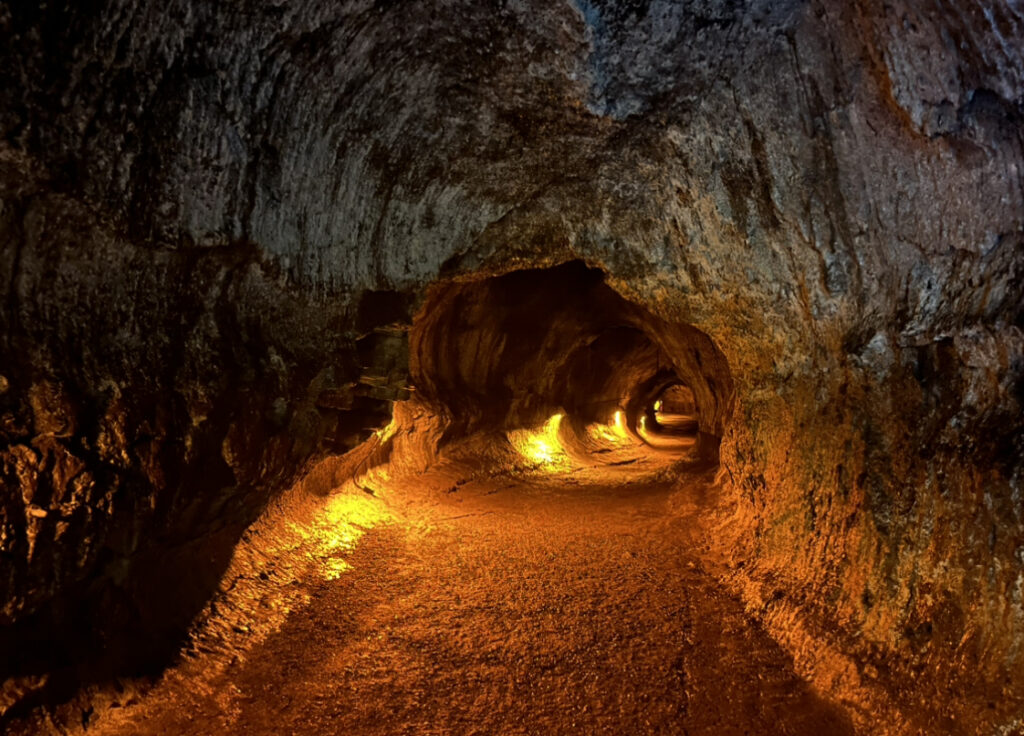
If you stick your hand into some of the cavities you can feel hot, steamy air coming out of the still-warm flows. We scrambled up the loose side of the cone to the crater rim where someone had left a small offering of flowers to placate Pele’s anger. Little clouds of steam around the top let us know that things were still warm underfoot. The view down the valley from the crater edge is incredible. The northeast side is gone -presumably consumed by the flows as they escaped toward the sea. Fresh lava stretches for miles, dotted with cones, lining a huge valley to the ocean.
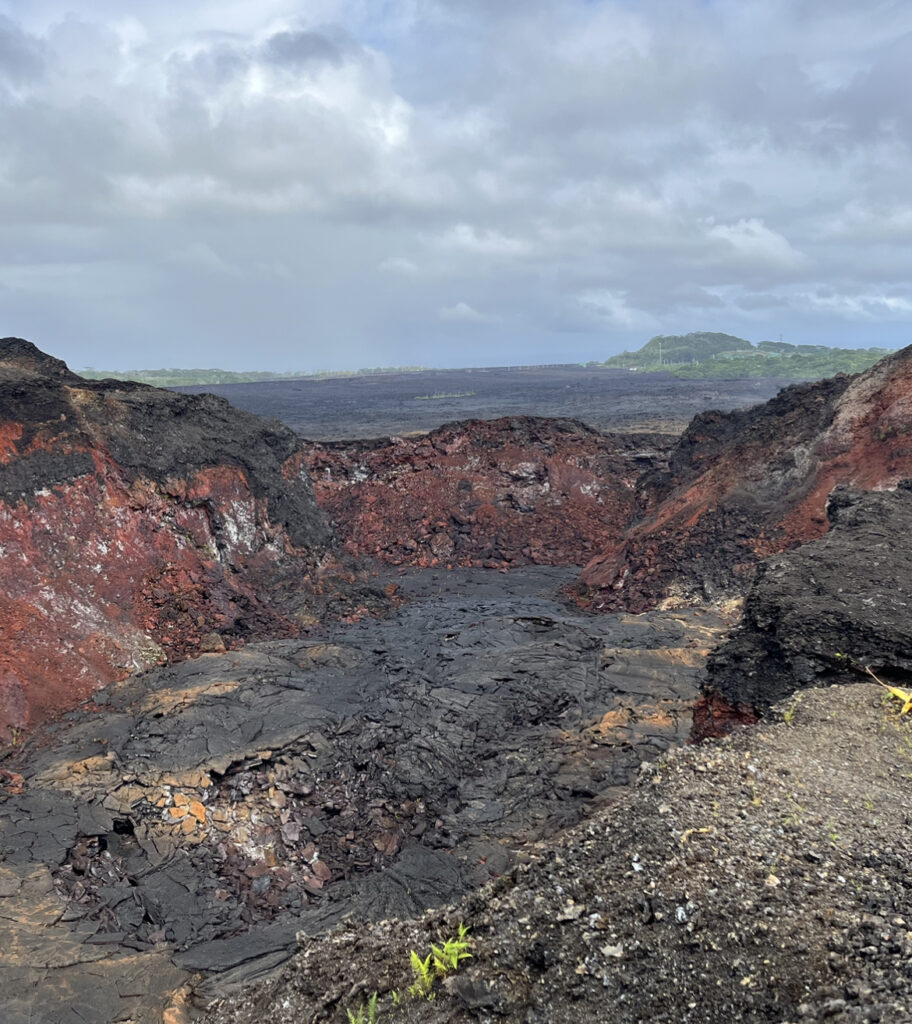
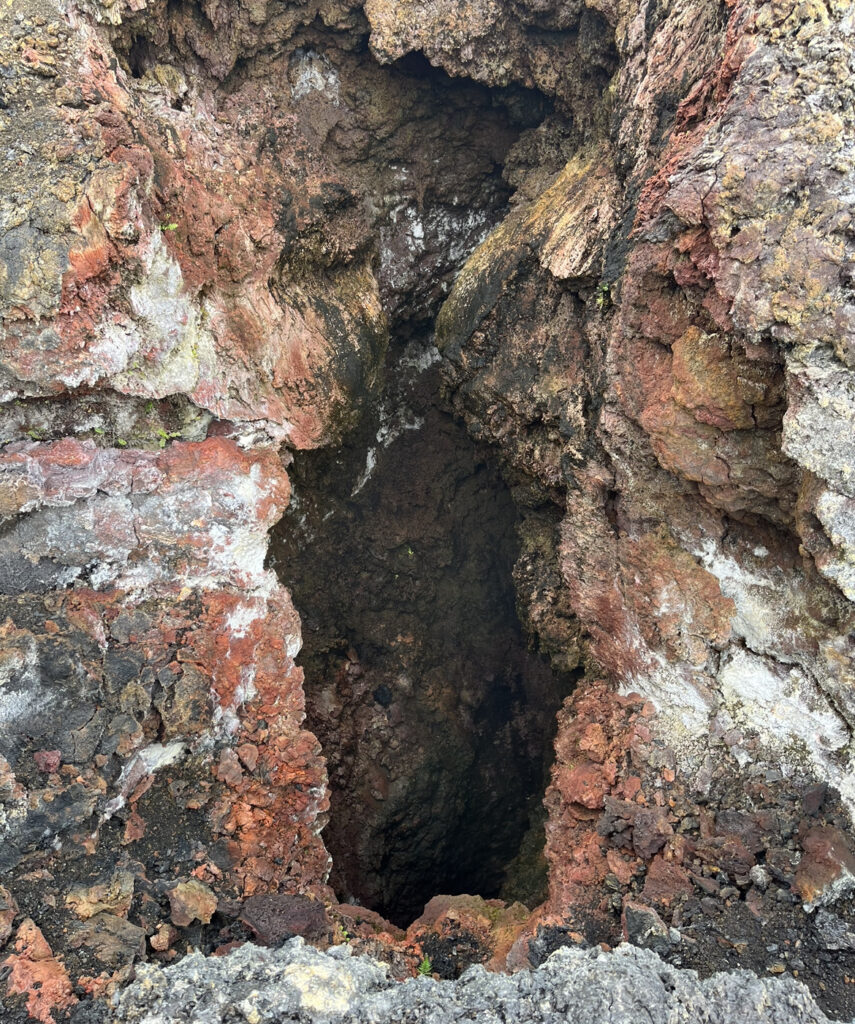
Get Off My Land
The most active steam vent near Fissure 8 is locked away behind an incongruous white barbed wire fence and on top of some some of the fence posts are surveillance cameras. You can stare at the vent from 20 yards away, but you can’t go right up to it unless you want to risk serious cuts and scrapes. I was busy waving at one of the cameras (you have to, right?) while Melissa told us a story about her neighbor who also runs private tours of the lava fields. Shortly after the end of the eruption he started buying up small plots of otherwise useless land, buried by new lava, covering some of the key volcanic features. So now, if you want to visit the steam vent, you have to book his tour. He’ll unlock the gate and let you in to see it up close.
He watches his camera feed diligently during the day. If any visitors look like they might try to get over the fence, he screams up in a truck and starts shouting at them to get off his land. God only knows why he was allowed to build the fences – they stick out like sore white thumbs on the fresh basalt- and even though I never met him I’m pretty sure he’s not the kind of chap I want to have a beer with. So, if you go there, my suggestion is book Melissa’s tour and immerse yourself in an hour or two of amazing volcanic geology.
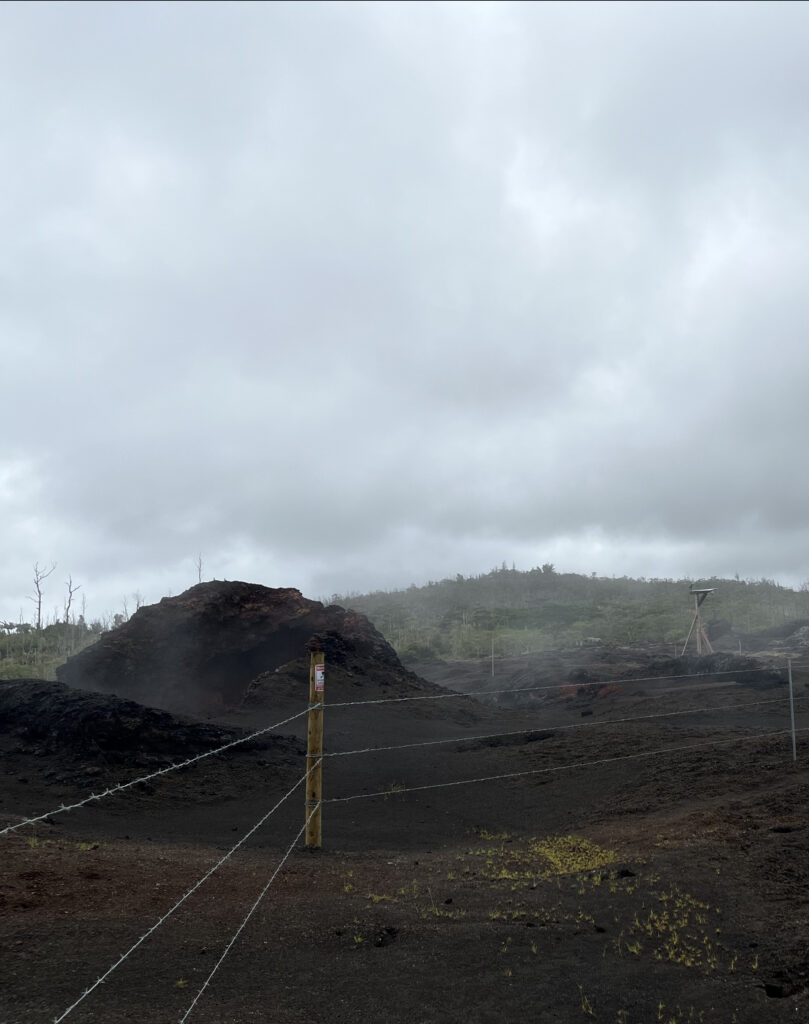
Over toward the edge of the lava field, where it butts up against the natural topography, the basalt crust slumps inward toward the main flow, evidence of the final drainage phase of the eruption as the last of basalt under the crust headed for the sea. The main source of the devastating flows is believed to be the Pu’u O’o crater – a subsidiary crater of Kilauea about 20 miles to the west of Leilani, which lies on the eastern side of the giant Kilauea volcano. At the same time, the floor of the main Kilauea crater slumped and collapsed suggesting drainage of lava from there as well.
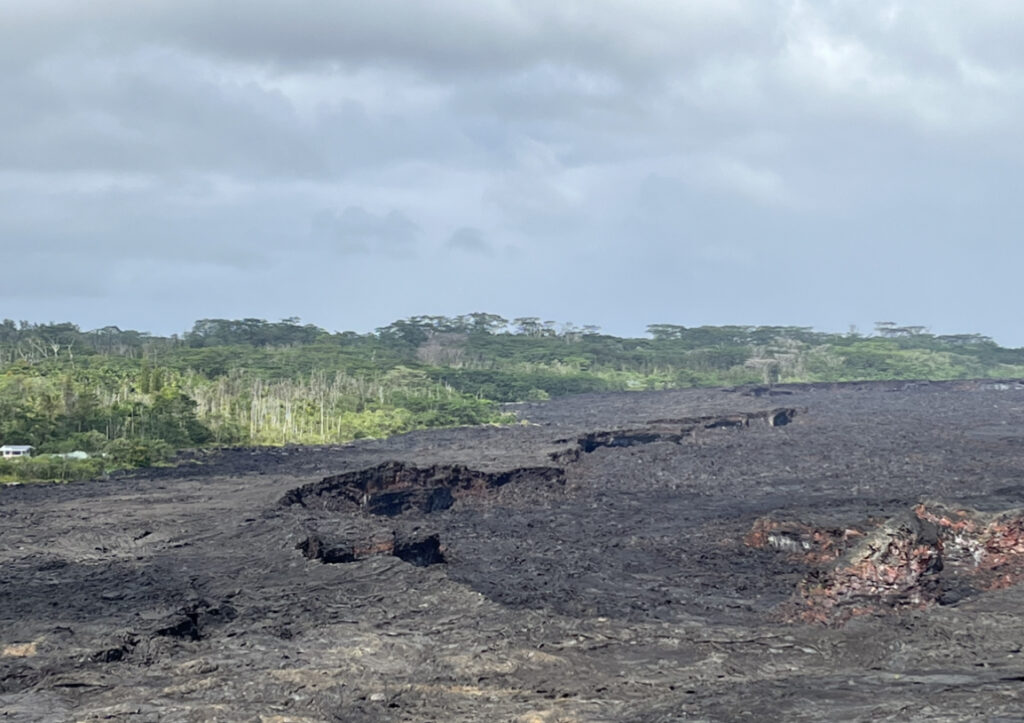
Step Away From The Rocks
Pretty rocks are everywhere at Fissure 8. It was candy store stuff for me. Melissa had tagged me as a geologist early in the tour and waited patiently while I picked up everything that caught my eye. Spongy bubbly rocks, bubbly spongy rocks, dense ones, tephra, diaphanous Pele’s hair, and iridescent beauties as colourful as metallic beetles. But the one thing you’re not supposed to do on the Big Island, the one thing the locals warn you about, is take samples of lava rocks home with you which is a shame because the fresh stuff is stunning. It’s illegal to collect in any of the parks and there’s the minor issue of Pele, the Hawaiian Goddess of Volcanoes and Fire.
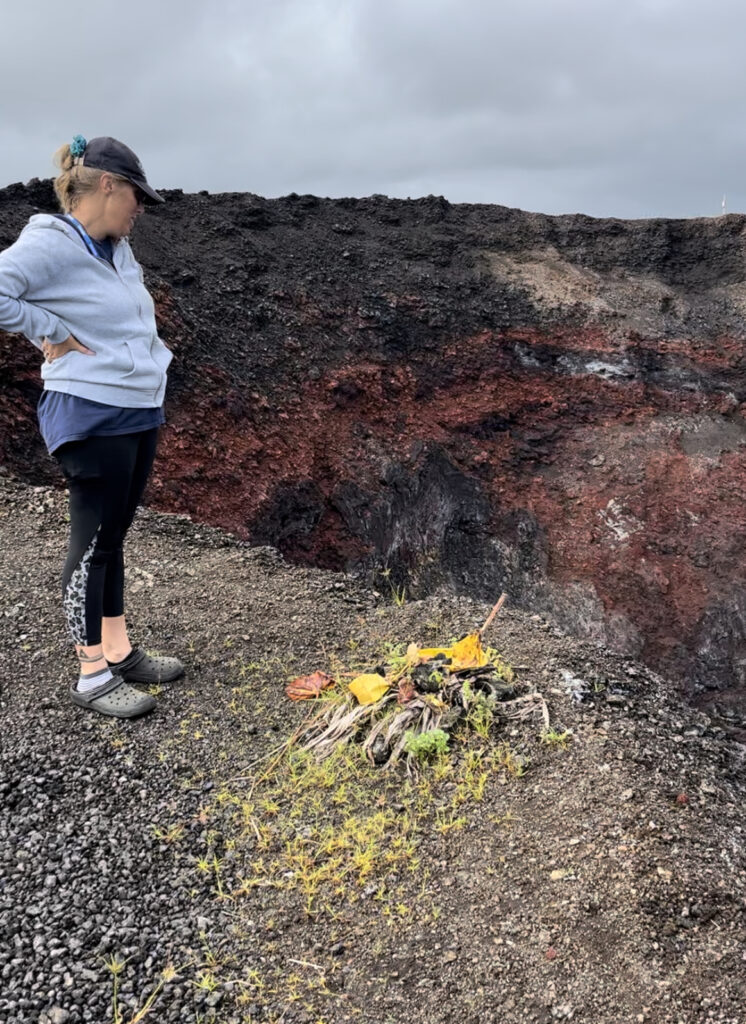
Ms. Pele is a jealous old harridan, a proper female Samuel Jackson, who takes care of her own. Imagine 40 years of bad luck, oozing boils and family tragedy and you’ll get the idea. Earlier in the week, during a guided hike one morning in the Kilauea Iki caldera at Volcanoes National Park, our chirpy tour guide, John, told us a flowery tale of unfortunate tourists, cursed with endless bad luck after collecting the pretty rocks. Many of them mail their geo-souvenirs back to the park offices. The packages come from all corners of the planet, usually accompanied by letters begging for the park staff to return the stolen chunks to the crater in the hope of lifting Pele’s curse. I wasn’t convinced – it’s a modern legend which may have been invented by the park wardens to stop people nicking nice rocks- but I resisted the temptation as any conservation-minded geologist should, and now there’s a sad empty space on my office rock shelf where my very own collection of fresh Hawaiian basalt was supposed to be. Sigh.
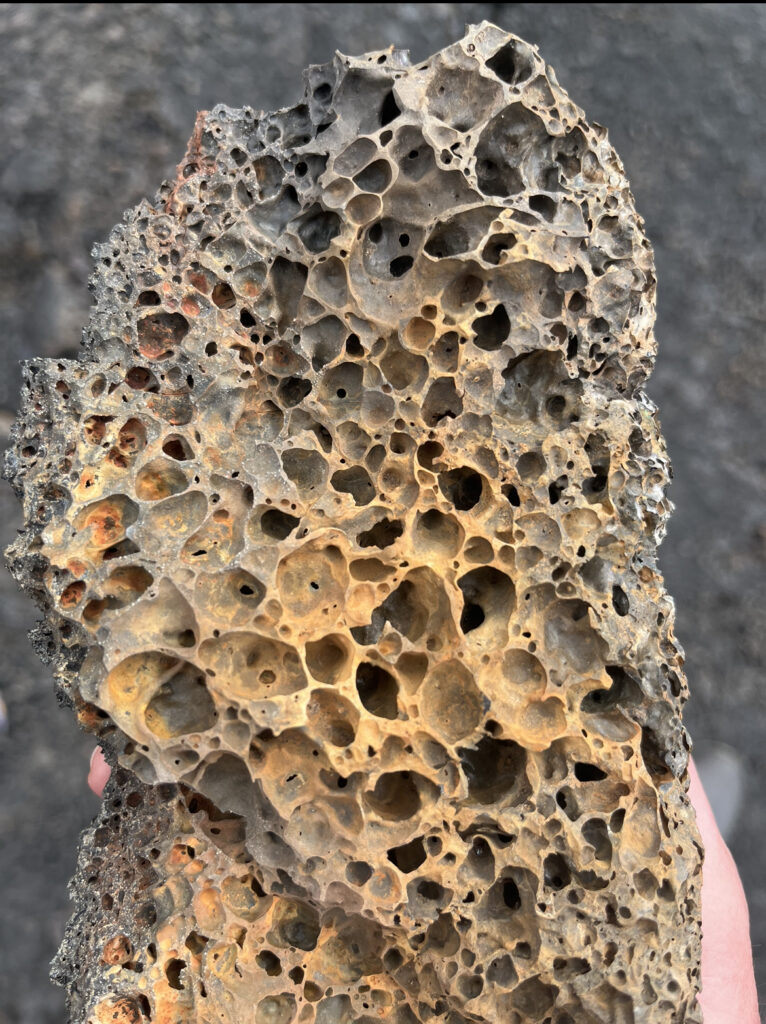
Go There
Anyways, to wrap this up- if you find yourself on the Big Island, looking for an interesting nature trip away from the madding crowds of tourists, drop Melissa an email. Tip her generously and be prepared for a close-up meeting with nature, red in tooth and claw.
And remember…
I like going to Hawaii. I want to go again. Please subscribe to my blog using the active, steaming subscription box at the top right of this page. If enough people subscribe, hopefully one day I’ll be a famous science writer who gets paid a fortune for penning popular science articles, and then I’d be able to afford to go to Hawaii more. Then again, probably not.

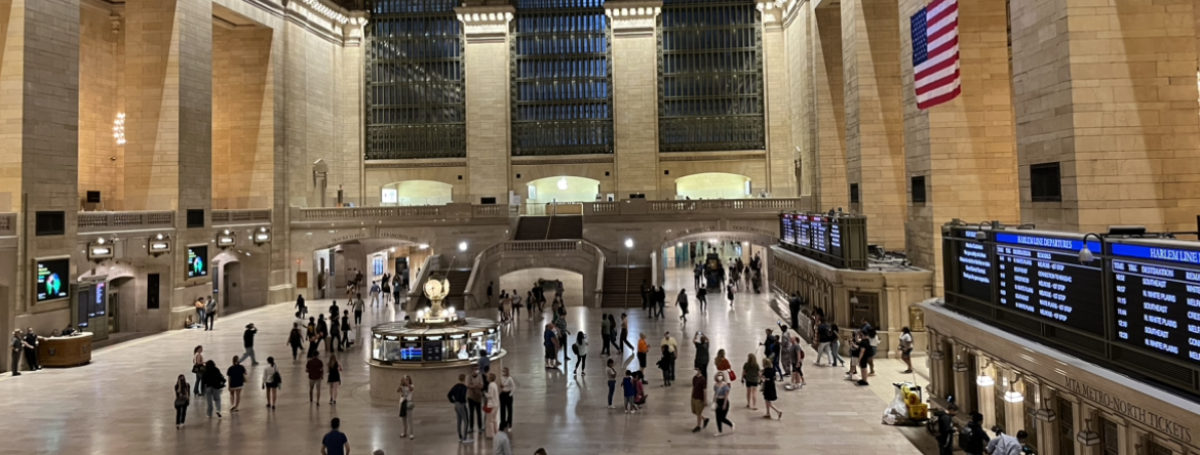
Very, very interesting, Ralph. As a non-geologist whose interest was piqued when visiting the top of Vesuvius, Stromboli and especially Etna many years ago before any form of Health & Safety (where my mothers trainers melted underfoot as we weaved in and out of glowing fissures and saw lava flowing just 50cm beneath our feet) this piece is illuminating.
Well written mate, thank you.
Thanks Richard. Fascinating spot. Love Hawaii but you don’t go to the big island for great food. Just saying.
Great story. Thanks. Looking forward to the next story after your next trip to Hawaii (when you’re a famous science writer of course).
I was lucky enough to climb Krakatoa with a copy of Simon Winchester’s book (another famous geologist science writer!) in my hand. It too was an awesome adventure!
Thanks again.
Love this story! Fascinating and it’s definitely on my bucket list to check out a volcano!
thanks Jen! We miss you…
I love your writing. It’s brilliant and makes me feel your enthusiasm. I’ve never been terribly interested in going to Hawaii but now I want to go just for Melissa’s tour.
Thanks Michelle! It was a fun tour
Like we believe there’s an empty spot on your shelf, you inveterate collector you! You just had to say that so that the USGS don’t send their Navy Seal-trained extractors to repatriate the samples you took.
As a (former) igneous petrologist, I can confirm that every basalt looks like every other basalt, so in the worst case scenario just display a piece of Icelandic basalt and tell everyone it came from Hawaii.
Good lord you cynic.